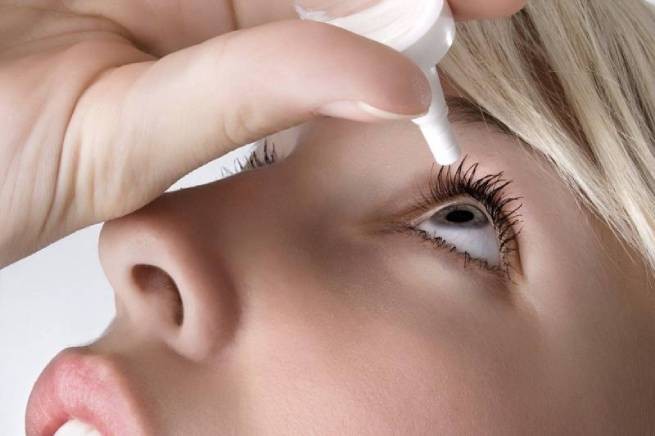Special exercises, special nutrition, glasses – exposing the most common myths.
The BB.LV publication has collected the most common misconceptions about improving vision and told about them, citing experts and research results.
Myth No. 1. Wearing glasses is harmful to the eyes
Some people refuse glasses and contact lenses because they are sure that vision correction means “relax” their eyes and their vision will become even worse. This is not true, say ophthalmologists. When a person does not wear glasses, his intraocular muscles do not function. As a result, the head hurts, performance decreases significantly, but most importantly, “undercorrection” when periodically wearing glasses or not wearing them leads to deterioration of vision.
British ophthalmologists under the leadership of Daniel O’Leary conducted a large-scale study. They gave some children glasses with full power, others with weak glasses. Alas, the experiment could not even be completed – children from the second group began to rapidly lose their vision. Scientists say: the only thing worse than partial correction is the complete absence of glasses or contacts.
Myth No. 2. Eye exercises will restore vision
Many gymnastic complexes for the eyes are offered on the Internet or in printed materials. But not everyone knows that no exercise can restore vision – this is only possible with the help of surgical correction. However, eye exercises are useful for preventive purposes. It helps relieve muscle tension and fatigue, get rid of dry eyes and headaches. Such exercises increase blood flow to the retina and strengthen the eye muscles. When spending a lot of time at the computer or gadgets, try to do eye exercises every two hours. Important: if you have retinal detachment, eye recovery after surgery, or inflammatory diseases, you should not do the exercises.
Myth No. 3. A special diet restores vision
Products that restore vision are also a myth. But some may be useful for age-related eye diseases. For example, this happens with cataracts. Age-related clouding of the lens is treated surgically by replacing the “worn out” lens with an artificial one. Moreover, the very next day the patient notices a significant improvement in vision.
In case of irreversible changes, maintenance therapy is indicated in the form of eye drops or vitamins that contain various nutrients for the retina, mainly lutein and zeaxanthin. The first is rich in blueberries, spinach, broccoli, carrots, currants and pumpkin, and the second is found in yellow foods: corn, paprika, melon, mango. A balanced diet makes it possible to obtain the required amount of nutrients from other sources – cod liver, fatty fish, leafy vegetables, butter, hard cheeses, egg yolk.
However, ophthalmologists are convinced that there is no special food that can restore vision. Proper nutrition is a preventative measure. Vitamins have a supporting effect and are not able to improve visual acuity or eliminate the need to wear glasses. It is much healthier, doctors say, to monitor the amount of saturated fats and sugars in the diet. They damage the vessels that provide microcirculation in the tissues of the eye.
Myth No. 4. Reading in dim light is dangerous
Since childhood, we have heard that reading in a poorly lit room is harmful to our eyesight. But a study by British scientists refutes this claim. Reading in the dark does not affect vision, but it does cause fatigue in the eye muscles. Judge for yourself: if this were really so, all our ancestors who knew how to read before the advent of electricity would have been blind. After all, they had to gain knowledge in the dim light of candles and gas lamps.
The human eye quickly adapts to external conditions. In poor lighting, the pupil dilates, resulting in more light reaching the retina, so twilight does not harm it. To prevent your eyes from getting tired while reading, try to take a short break every 20–30 minutes.
Myth No. 5. It is not recommended to give birth after laser correction
There is an opinion that after laser vision correction, natural childbirth is contraindicated – this, allegedly, can lead to retinal detachment. But such risks have nothing to do with the operation. Vision complications can occur in any patient with myopia, regardless of whether laser correction was performed. If the operation took place at least six months before pregnancy, there is no need to worry.
But vision correction cannot be done during pregnancy and lactation – due to hormonal changes, difficulties may arise with the healing of the cornea. Also, sometimes after surgery, ophthalmologists prescribe antibiotics, and expectant mothers are not recommended to take them.
Myth No. 6. Wearing any dark glasses protects your eyes from the sun.
Looking at the sun without protective glasses is dangerous for your eyesight. Sunglasses make it easier to perceive bright light and allow the eyes to relax, which also protects against the appearance of fine lines and wrinkles.
But not all glasses models effectively perform these functions. Eye protection depends on the type of lenses used. In this case, the color of the glass and the degree of shading do not play a role. It is important to have a high-quality filter that will block dangerous sun rays. Wearing the “right” sunglasses significantly reduces the risk of eye diseases. And the larger the glasses, the better; they are designed to protect not only the pupils, but also the skin around the eyes.
Myth No. 7. The lens will fall behind the eye
Some fear that the lens may “roll” behind the eye and remain there. This is impossible. Sometimes it can actually slide under the upper eyelid, but it never disappears without a trace. It will not go further than the conjunctival sac, which is located between the eyeball and the eyelid. As a rule, displacement occurs due to an incorrectly selected radius of curvature of the lenses or due to dry eye.
If the lens has moved under the eyelid, do not be alarmed. This does not pose a serious health hazard. Wash your hands thoroughly, put a moisturizing solution in your eye and blink as fast as possible. The rolled lens should return to its place. If you are afraid to get it yourself, consult an ophthalmologist.
Myth No. 8. Your vision is excellent, which means you don’t need an ophthalmologist
The most popular misconception. After all, myopia or farsightedness are far from the only possible problems. Some diseases may not appear for a long time: retinal detachment, cataracts, glaucoma. The specialist will not only check your visual acuity, but will also determine the presence of any abnormalities in the early stages.
According to the World Health Organization, approximately 80% of all visual impairments are preventable. If, for example, a retinal tear is detected in a timely manner, the weak spot can be “strengthened” using a laser. Visit your ophthalmologist at least once a year. And if something bothers you, don’t wait for a routine examination and make an appointment with a doctor.
Currently, approximately 2.2 billion people in the world suffer from visual impairment. The most common disorders that require complex therapy are myopia (myopia), farsightedness (hypermetropia) and astigmatism. Based on the research results, the doctor prescribes the most appropriate method of correction individually for each patient and gives appropriate recommendations aimed at reducing or alleviating visual stress.







More Stories
Why cats don't go to your hands and don't like to be petted
When does old age begin? The answer to this question changes with age.
Association of Professional Nutritionists to be created in Greece